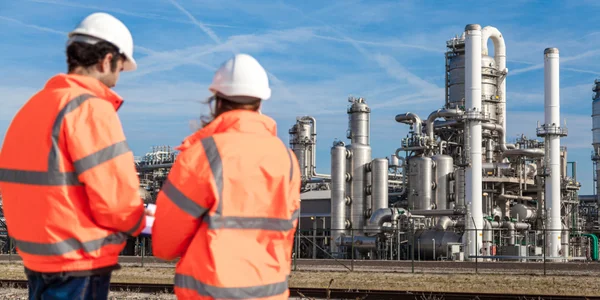Odour Control
- Электростатические осадители
- Дома с подушками безопасности обратного хода
- Тканевые фильтры
- Гибридные электрофильтры
- Десульфуризация дымовых газов
- Охладитель с принудительной тягой
- Скрубберы
- Газоочистные сооружения
- Циклоны
- Мультиклоны
- Система удаления запахов + ЛОС
- Система пылеудаления
- Система удаления дыма
- Устройства взрывозащиты
- Вентиляторы и воздуходувки
- Очистка сточных вод
- Теплообменник воздух-воздух
Офисы
ГЛАВНЫЙ ОФИС

Германия
-
Интенсивный фильтр Himenviro Technologies GmbH
Neustraße 45 - 49, 42553, Фельберт, Германия/Германия - +49 20534200990
РЕГИОНАЛЬНЫЙ ОФИС

Великобритания
-
Фильтр Intensiv Himenviro UK Limited
47, Bath Street WS13BX, Уолсолл, Западный Мидлендс, Великобритания - +44 1922 628893
РЕГИОНАЛЬНЫЙ ОФИС

Объединенные Арабские Эмираты
-
Интенсивный фильтр Himenviro Technologies FZE – LLC
Бизнес-центр, Sharjah Publishing City Free Zone, Шарджа, ОАЭ - +971-556074697
РЕГИОНАЛЬНЫЙ ОФИС

Индия
-
Intensiv-Filter Himenviro Private Limited
D-247/11, Сектор-63, Нойда - 201301, Уттар-Прадеш, Индия - +91-120-4642-500
РЕГИОНАЛЬНЫЙ ОФИС




Индия
-
Intensiv-Filter Himenviro Private Limited
D-247/11, Сектор-63, Нойда - 201301, Уттар-Прадеш, Индия - +91-120-4642-500
РЕГИОНАЛЬНЫЙ ОФИС




Индия
-
Intensiv-Filter Himenviro Private Limited
D-247/11, Сектор-63, Нойда - 201301, Уттар-Прадеш, Индия - +91-120-4642-500
Система удаления ЛОС и запахов для промышленности
В настоящее время выбросы летучих органических соединений (ЛОС) попадают в атмосферу в результате большого количества производственных процессов, в которых используются органические вещества.
Приложение
- Покрасочные и окрасочные камеры
- Промышленная отделка
- Процессы нанесения покрытий
- Химические процессы
- Производство пластика и резины
- Фармацевтические процессы
- Пары и газы от сточных вод


Процесс
- Максимальная концентрация растворителя: 11 000 мг/Нм3
- Концентрация растворителя для автотермического режима: 1,3-1,7 г/Нм3.
- Рабочая температура оборудования RTO превышает 750°C и может достигать 1100°C для некоторых применений.
- Керамический материал имеет долгий срок службы
- Внутренняя изоляция для экономии энергии и термический эффективность > 98%
Наши услуги
Исследование случая
Часто задаваемые вопросы
1. What is an odour control system?
An odour control system is a setup that removes bad smells from the air. It uses different methods to clean the air, making it more pleasant and safe to breathe. These systems are important in places like factories, sewage plants, and waste treatment facilities where strong odours can be a problem.
2. How does an odour control system work?
An odour control system works by capturing and treating smelly air. It uses methods like chemical scrubbing, where chemicals neutralize bad smells, or bio-filtration, where tiny organisms break down odour-causing substances. The cleaned air is then released back into the environment without the unpleasant odours.
3. Why are odour control systems important in industries?
Odour control systems are important in industries because they help keep the air clean and safe. Bad smells can be harmful to workers and nearby communities. Controlling odours also helps companies follow environmental rules and maintain good relationships with the public.
4. What types of odour control technologies are available?
There are several types of odour control technologies:
- Адсорбционные системы: Use materials like activated carbon to trap odour molecules.
- Chemical Scrubbers: Use chemicals to neutralize odorous gases.
- Biological Oxidation Systems: Use microorganisms to break down odour-causing compounds.
Each type is chosen based on the specific needs of the facility.
5. How do you choose the right odour control system for your facility?
Choosing the right odour control system depends on factors like the type of odour, the size of the area, and budget. It’s important to assess the specific needs of your facility, consider the efficiency of different systems, and consult with experts to select the most suitable solution.
6. Can odour control systems handle multiple types of odours?
Yes, many odour control systems are designed to handle various types of odours. For example, chemical scrubbers can neutralize different odorous gases, and bio-filters can treat a range of organic smells. The effectiveness depends on the system’s design and the specific odours present.
7. What maintenance is required for odour control systems?
Maintenance for odour control systems includes regular inspections, replacing filters or media, and ensuring all parts are functioning properly. Routine maintenance helps the system work efficiently and extends its lifespan. It’s important to follow the manufacturer’s guidelines for specific maintenance tasks.
8. Are odour control systems environmentally friendly?
Many odour control systems are designed to be environmentally friendly. For instance, bio-filters use natural processes involving microorganisms to break down odorous compounds without harmful chemicals. Choosing the right system can help minimize environmental impact.
9. How effective are odour control systems in eliminating industrial odours?
Odour control systems can be highly effective in reducing or eliminating industrial odours when properly designed and maintained. The efficiency depends on factors like the type of system, the specific odours being treated, and regular maintenance. Consulting with experts can help achieve optimal results.
10. What factors should be considered when installing an odour control system in India?
When installing an odour control system in India, consider factors like local environmental regulations, the specific odour issues of your facility, climate conditions, and availability of maintenance services. It’s also important to choose a system that fits your budget and operational needs.








